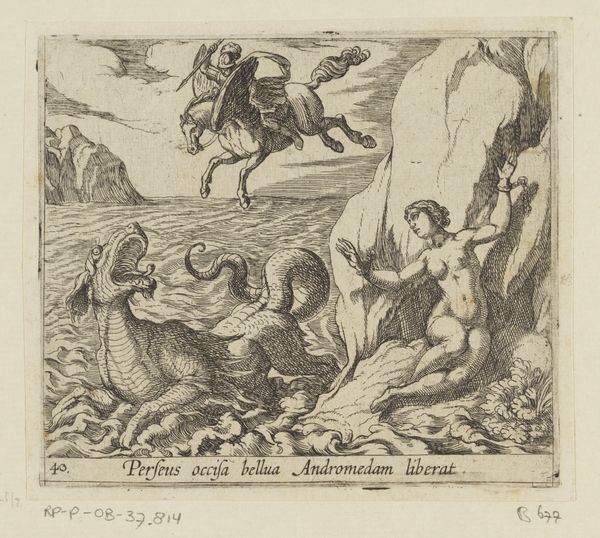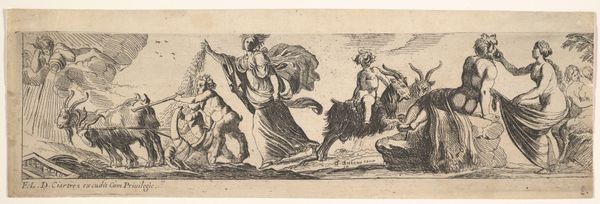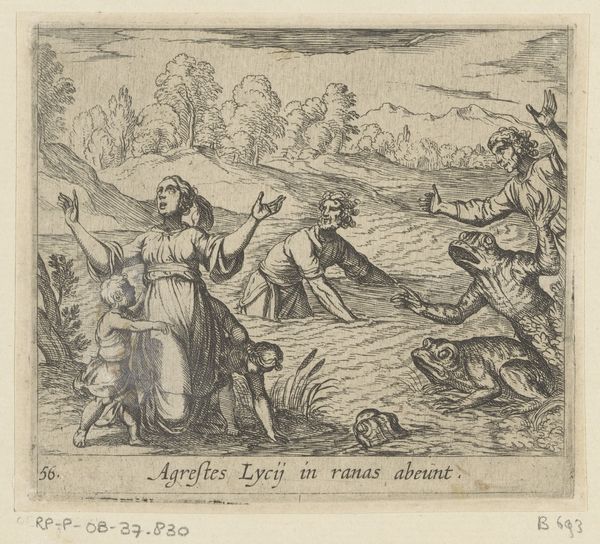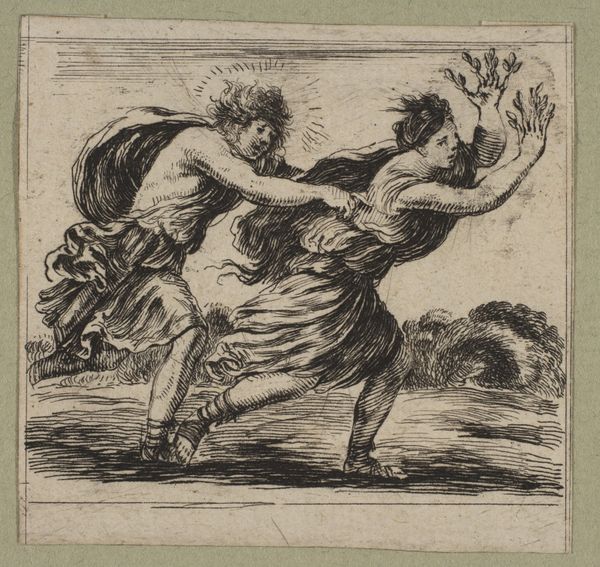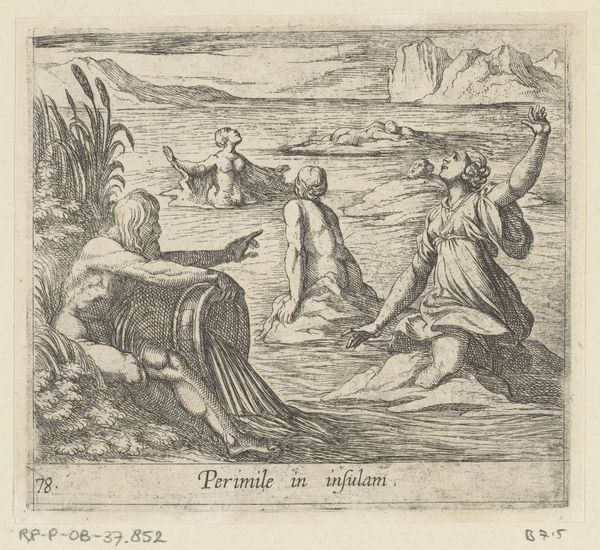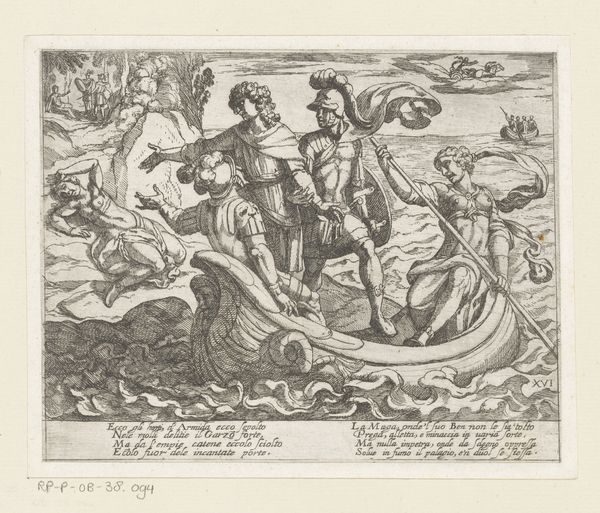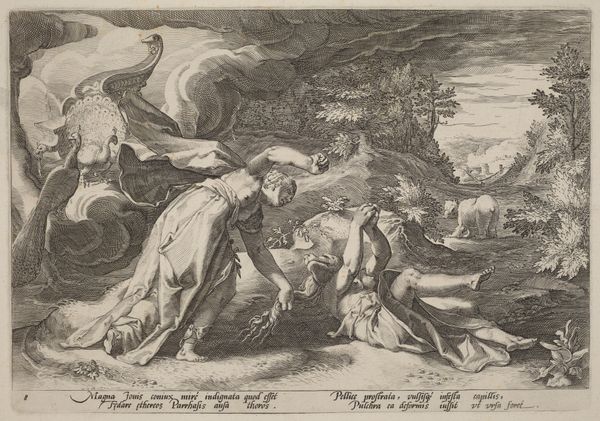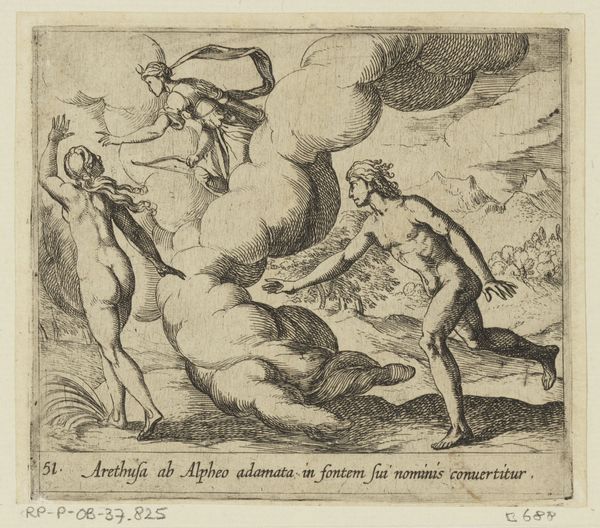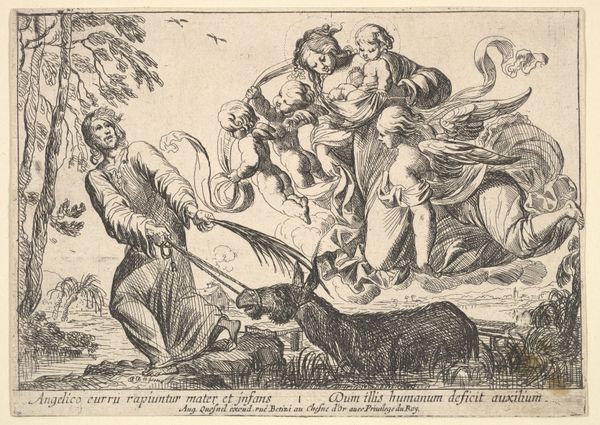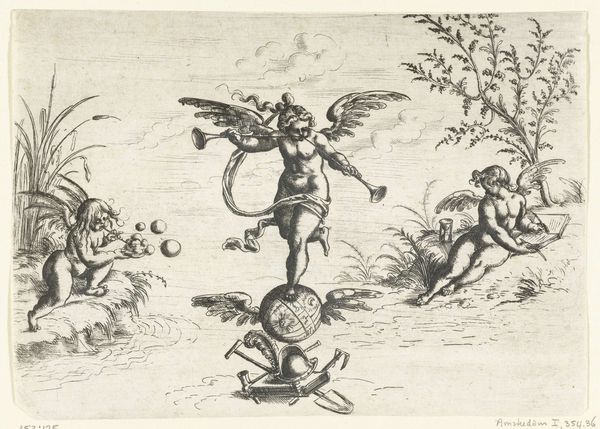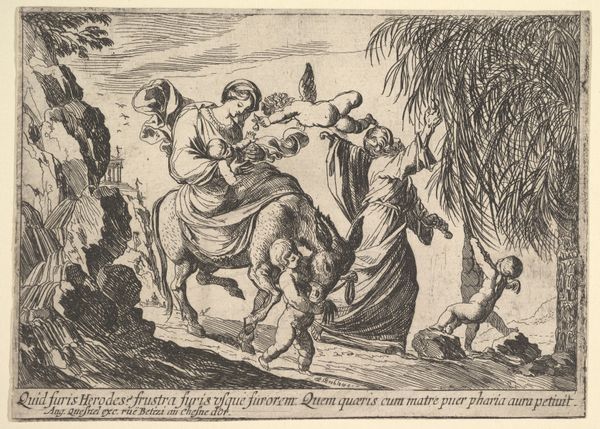
Learchus gedood door Athamas, terwijl Ino en Melicertes in zee springen 1606
0:00
0:00
print, engraving
#
baroque
# print
#
figuration
#
line
#
history-painting
#
engraving
Dimensions: height 104 mm, width 117 mm
Copyright: Rijks Museum: Open Domain
Editor: This engraving, “Learchus Killed by Athamas, while Ino and Melicertes Jump into the Sea,” was created by Antonio Tempesta in 1606. The figures feel so dynamic and the drama is palpable even with the limited tones. What story do you see unfolding through the materials used here? Curator: Well, first off, consider what an engraving *is*: it's fundamentally about transferring an image from one material—the metal plate incised by the artist—to another, paper. That act of transfer changes everything. Here, you see this dynamic Baroque scene from mythology being shaped by labor: the precise labor of the engraver cutting lines and the industrial labor of producing these prints. It speaks volumes about how narratives are disseminated and consumed, right? What do those sharply delineated lines tell us about the intended audience for this kind of imagery? Editor: I guess they speak to reproducibility. More people can consume prints than an original painting, suggesting a wider, perhaps less wealthy, audience. But how does the act of making prints influence how we understand these mythic stories? Curator: Precisely. Printmaking flattens hierarchies of access. Consider the original intent behind circulating these classical narratives: Did the relative accessibility granted through printmaking democratize art? Did that change its power to persuade or its role as propaganda? The story becomes less about kings and gods, perhaps, and more about what ordinary people make of those narratives, using ordinary materials like paper and ink. Editor: I never considered that. The *materiality* becomes part of the message itself, making us consider the story's dissemination just as much as the content. Curator: Exactly.
Comments
No comments
Be the first to comment and join the conversation on the ultimate creative platform.
